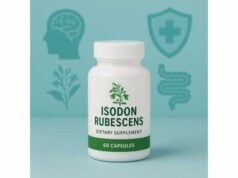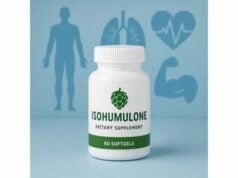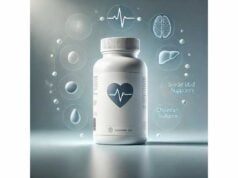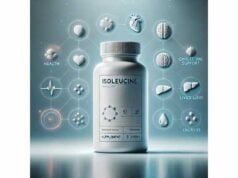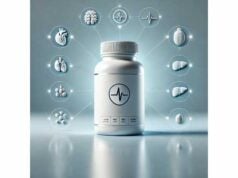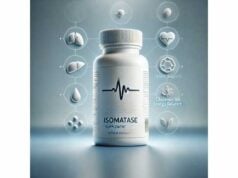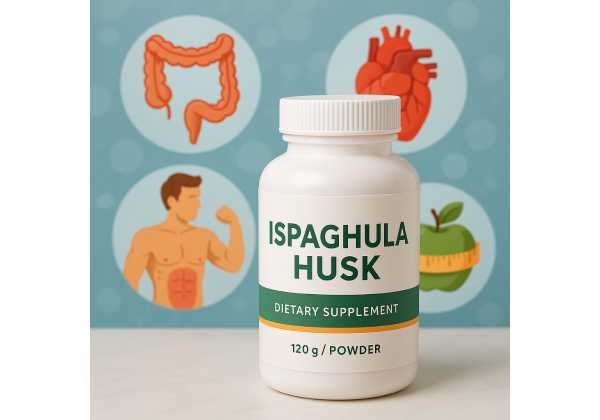
Ispaghula husk—also called psyllium husk (from Plantago ovata)—is a soluble, gel-forming fiber prized for digestive regularity and cardiometabolic support. Mixed with water, its viscous mucilage softens stool, supports bowel movements, and modestly improves LDL cholesterol, post-meal glucose, and fullness after eating. Because it is minimally fermented, ispaghula is often better tolerated than many fibers and fits diverse diets, including low-FODMAP adaptations. It is available as powders, capsules, wafers, and blends; quality products specify husk grams per dose and clear mixing directions. Used correctly, effects on constipation typically appear within 12–72 hours, while lipid and glycemic changes require daily use for weeks. Safety hinges on adequate fluids and smart timing around medications. This guide explains what to expect, how to use it for specific goals, who should avoid it, and how to troubleshoot common issues so you get predictable, comfortable results.
Key Insights
- Supports regularity and softens stool; typical onset 12–72 hours.
- Modestly lowers LDL cholesterol with 7–10 g/day soluble fiber from husk.
- Mix each dose with ≥240 mL water; separate from medicines by ~2 hours.
- Typical adult dose: 3–5 g husk per serving, 1–3 times/day with fluids.
- Avoid with swallowing difficulties, GI strictures, or known husk allergy.
Table of Contents
- What is ispaghula husk and how it works
- Which benefits are supported by evidence
- How to take it for common goals
- What can change the effect
- Mistakes and troubleshooting
- Safety, side effects, and who should avoid it
What is ispaghula husk and how it works
Ispaghula (psyllium) husk is the outer coat of Plantago ovata seeds. The husk is rich in arabinoxylans that bind water to form a thick, viscous gel. That gel is the reason psyllium behaves differently from roughage like wheat bran. Viscosity drives three core actions:
- Bowel regularity. Water-binding swells stool volume and softens texture, stimulating peristalsis without irritating the gut lining. Because psyllium is only slowly fermented, gas and cramping are typically less than with many fermentable fibers.
- Glycemic buffering. When taken with meals, the gel slows gastric emptying and carbohydrate absorption, smoothing post-meal glucose and insulin spikes.
- Cholesterol lowering. Viscous fiber traps bile acids for excretion; the liver draws LDL-cholesterol from circulation to make new bile, nudging LDL downward over weeks.
Commercial products label total powder weight per serving (which may include flavorings) and, crucially, the husk amount. Most evidence-based doses refer to grams of husk, not just “teaspoons.” Powders (unflavored) offer the most control over dosing; capsules are convenient but require many pills to match an effective gram dose. Wafers and flavored sachets are pre-measured but often include sweeteners and flavor agents—helpful for taste, but worth noting if you follow a restricted diet (e.g., low-FODMAP or phenylketonuria where aspartame is a concern).
Ispaghula can be taken short term for occasional constipation or daily for long-term goals like LDL reduction or glycemic support. It is non-addictive; it works mechanically, not by stimulating nerves in the colon. However, fluid is non-negotiable: mixing each serving with a full glass of water (about 240 mL) and drinking promptly prevents thickening in the throat and ensures the gel forms in the gut, not in your cup.
Finally, timing matters. The same gel that slows sugar uptake can temporarily slow drug absorption. Spacing ~2 hours between ispaghula and oral medicines preserves reliability of both.
Which benefits are supported by evidence
Constipation relief (adults and many adolescents). Bulk-forming fibers are frontline options for chronic idiopathic constipation. Ispaghula improves stool frequency and consistency and reduces straining when taken with adequate fluids. In guideline reviews, fiber is conditionally recommended because it is safe, accessible, and especially helpful for patients with hard stools. Expect a gradual effect: for many, the first comfortable bowel movement arrives within 12–72 hours of correct use. In irritable bowel syndrome with constipation (IBS-C), psyllium often outperforms bran because it is gel-forming yet modestly fermentable, reducing the chance of painful gas.
Cholesterol and cardiometabolic health. Viscous soluble fiber, including psyllium, produces a modest LDL-cholesterol reduction when taken daily, typically accumulating over 4–8 weeks. Benefits scale with dose and baseline LDL. Meta-analyses of randomized trials show clinically meaningful LDL reductions from ~7–10 g/day of soluble fiber from psyllium husk. While dietary pattern remains the foundation for lipid management, adding ispaghula is a low-risk adjunct for people who need an extra nudge toward goal, including those on statins seeking incremental improvement.
Glycemic control. Taken before or with carbohydrate-containing meals, ispaghula slows glucose entry into circulation and blunts insulin demand. Trials and recent systematic reviews report improvements in fasting glucose and HbA1c among individuals with impaired glucose tolerance or type 2 diabetes, with the largest effects in those starting furthest from goal. Consistency and mealtime timing are key—sporadic dosing is far less effective than routine use.
Blood pressure and satiety. Psyllium’s small but favorable effects on systolic and diastolic blood pressure likely reflect improved insulin dynamics and weight-neutral fullness that can reduce overall caloric intake. Many people report better satiety when ispaghula is taken 10–30 minutes before meals with water; over months, that can support weight management efforts without the stimulant side effects of “appetite suppressants.”
Bowel regularity in pregnancy and older adults. With clinician approval and proper hydration, ispaghula is commonly used during pregnancy and in older adults because it is not systemically absorbed and avoids stimulant laxative habituation. As swallowing difficulties become more common with age, the mixing technique and fluid volume deserve extra attention (see “How to take it”).
Who benefits most. People with hard, infrequent stools; mildly elevated LDL; post-meal glucose spikes; or those seeking a gentler fiber for IBS tend to see the clearest gains. Those with frequent loose stools may still benefit at lower doses when paired with meal timing, but they should increase slowly to avoid excess urgency.
How to take it for common goals
General rules that never change
- Measure the husk, not just the scoop. Check the label for grams of psyllium husk per serving.
- Mix with at least 240 mL (8 oz) of cool water per serving; stir briskly and drink right away. If it thickens, add more water, stir, and finish.
- Separate by ~2 hours from prescription or over-the-counter oral medicines and supplements.
- Increase gradually over 3–7 days to minimize gas.
Starter plan for regularity
- Begin with 3–3.5 g husk once daily in the evening with ≥240 mL water.
- After 2–3 days, if stools remain hard or infrequent, add a morning dose (total 6–7 g/day).
- Some adults respond best at up to 10–15 g/day, divided 2–3 times. Stay well-hydrated (aim for pale-yellow urine).
For cholesterol support
- Target 7–10 g/day of soluble fiber from psyllium husk, split with meals (e.g., 3–5 g with breakfast and dinner).
- Expect LDL changes over 4–8 weeks; recheck lipids with your clinician.
For glycemic smoothing
- Take 3–5 g husk in ≥240 mL water 10–30 minutes before carbohydrate-containing meals (1–2 times/day).
- If you use glucose-lowering medicines or insulin, monitor for improvements and discuss potential dose adjustments with your care team.
For satiety and weight management
- Use 3–5 g before the two largest meals, paired with protein and vegetables; reassess intake and fullness after 2 weeks.
Capsules, wafers, blends
- Capsules often contain ~0.5 g husk each; achieving 5 g may require 10 capsules with a full glass of water, one at a time.
- Wafers/sachets are convenient but may include sweeteners. Match total husk grams to your goal.
Children, pregnancy, older adults
- Children (≥6–12 years): use product-specific pediatric directions; emphasize fluids.
- Pregnancy: commonly used with clinician guidance; start low, go slow, hydrate.
- Older adults: ensure safe swallowing; choose thinner mixtures (more water), and consider a straw if recommended by a clinician or speech therapist.
When to expect results
- Constipation: 12–72 hours.
- Glycemic/lipid changes: 4–8 weeks of consistent daily use.
- If no improvement in bowel symptoms after 7 days of correct dosing and hydration, consult a healthcare professional.
What can change the effect
Fluid volume and timing. Too little liquid creates a thick bolus that’s uncomfortable to swallow and less effective in the gut. Conversely, adequate water lets the gel expand where it should—improving stool softness and delivering metabolic effects. Drinking the mixture promptly after stirring prevents over-thickening.
Meal composition. Taking ispaghula with or shortly before meals rich in carbohydrates maximizes glucose-blunting benefits. With high-fat meals, gastric emptying is already slowed; psyllium’s mealtime advantage may be smaller.
Dose and split dosing. One large nightly dose can help morning bowel movements, but split dosing (morning/evening) often balances comfort and consistency. For metabolic goals, smaller, meal-adjacent doses tend to outperform a single daily dose.
Gut sensitivity and IBS. In IBS, fermentable fibers (e.g., inulin) can worsen gas; ispaghula’s viscous, low-FODMAP profile is usually better tolerated. Nonetheless, raising the dose gradually (every 3–4 days) helps your microbiome adapt.
Medications and supplements. The viscous gel can temporarily delay or reduce absorption of some drugs (e.g., carbamazepine, lithium, certain antidepressants, thyroid hormone, and mineral supplements like iron). Spacing by ~2 hours is a practical default; your pharmacist can advise when a longer window is wise.
Physical activity. Light activity (a walk after meals) synergizes with fiber for motility. Prolonged sedentary time can blunt results even at adequate doses.
Product quality. Look for standardized husk content, minimal unnecessary additives, and clear mixing directions. If you’re sensitive to artificial sweeteners, choose unflavored or stevia-sweetened versions. For capsule users, verify capsule material (gelatin vs. cellulose) if dietary restrictions apply.
Individual variability. People with slow-transit constipation or pelvic floor dysfunction may need additional therapies. Ispaghula can still play a role but works best as part of a broader plan (biofeedback, osmotic laxatives, secretagogues) guided by a clinician.
Mistakes and troubleshooting
Mistake: Not enough water.
Fix: Mix each serving with ≥240 mL water, stir briskly, drink immediately. If it thickens before you finish, add more water and stir again. Maintain daily fluid intake throughout the day.
Mistake: Taking it at the wrong time.
Fix: For regularity, consistency matters more than clock time; try evening or morning + evening. For glycemic benefits, take 10–30 minutes before carb-rich meals. For LDL support, split doses with meals.
Mistake: Increasing too fast.
Fix: Build up by 1–2 g every 3–4 days. Temporary gas or bloating early on usually settles as the gut microbiota adapts.
Mistake: Overreliance for complex constipation.
Fix: If you have chronic constipation with straining despite correct fiber use, discuss osmotic laxatives (e.g., PEG), stimulant rescue therapy, or secretagogues/prucalopride with your clinician. Fiber is a cornerstone, not a cure-all.
Mistake: Mixing with insufficient liquid foods.
Fix: Avoid stirring directly into thick smoothies or yogurt at first; begin with water to observe texture, then chase with additional water.
Mistake: Taking with all your morning pills.
Fix: Space ~2 hours between ispaghula and medications/supplements. For thyroid hormone or certain anti-seizure medicines, ask your pharmacist for a tailored window.
Mistake: Assuming “natural” means safe for everyone.
Fix: People with swallowing problems, esophageal or GI strictures, prior bowel obstructions, or a history of psyllium allergy should avoid ispaghula. If you develop chest pain, vomiting, or difficulty swallowing/breathing after a dose, seek urgent care.
When to switch or stop
- Persistent bloating or cramps despite slow titration and hydration.
- No bowel improvement after 7 days of correct use.
- Signs of hypersensitivity (rash, wheeze, itch), especially in workers exposed to psyllium dust.
Small upgrades that help
- Use a shaker bottle for smoother texture.
- Add a squeeze of citrus after mixing (then drink promptly).
- Pair with a daily walking routine and a diet that includes other fibers (vegetables, oats, legumes) to diversify gut benefits.
Safety, side effects, and who should avoid it
Common effects. Early gas, bloating, or a feeling of fullness are the most frequent complaints; these usually ease within 1–2 weeks as the dose stabilizes and hydration improves. Stools should become softer and easier to pass without urgency.
Choking risk and obstruction. The gel-forming nature of ispaghula means mixing with enough water and drinking immediately is essential. Taking it dry or with too little liquid raises the risk of choking or esophageal impaction. People with a history of dysphagia, esophageal stricture, bowel obstruction, or severe motility disorders should not use it unless specifically advised and supervised by a clinician.
Allergy. Rarely, psyllium exposure can trigger hypersensitivity (rhinitis, asthma, rash, or anaphylaxis), particularly in occupational settings where dust is inhaled. Stop use and seek medical care if you notice wheezing, hives, or facial swelling.
Drug–fiber interactions. The viscous gel can delay or reduce absorption of oral medicines and minerals. Separate by ~2 hours from: thyroid hormone, certain anticonvulsants, lithium, tricyclics/SSRIs/SNRIs, iron, calcium, magnesium, and fat-soluble vitamins. For narrow-therapeutic-index drugs, confirm timing with a pharmacist.
Glucose-lowering therapy. Because psyllium can improve glycemic control, people using insulin or secretagogues may experience lower glucose; monitor closely when starting or changing the dose and coordinate with your clinician to avoid hypoglycemia.
Electrolytes and fluid balance. While ispaghula is not a stimulant laxative, inadequate hydration can worsen constipation. Ensure daily fluid intake is appropriate for your health status (heart or kidney disease may require individualized guidance).
Special populations
- Pregnancy and lactation: commonly used when fluids are adequate; discuss persistent constipation with your obstetric provider.
- Children: use labeled pediatric products and emphasize drinking the full glass of water; avoid in children who cannot reliably swallow the mixture.
- Older adults: assess swallowing safety; choose thinner mixtures and supervised intake if needed.
- Renal/cardiac disease: fiber itself is safe, but fluid targets may differ—seek individualized advice.
When to seek medical care
- No bowel movement after several days with bloating and abdominal pain.
- Rectal bleeding or unexplained weight loss.
- New or worsening difficulty swallowing, chest pain, vomiting after doses.
- Ongoing need for “rescue” laxatives more than occasionally.
Used thoughtfully—with the right dose, fluids, and timing—ispaghula is a versatile, well-tolerated tool for bowel health and cardiometabolic support.
References
- Psyllium: MedlinePlus Drug Information 2024
- Pharmacological management of chronic idiopathic constipation 2023 (Guideline)
- Soluble Fiber Supplementation and Serum Lipid Profile 2023 (Systematic Review)
- The effect of psyllium consumption on blood pressure: A systematic review and dose–response meta-analysis of randomized controlled trials 2024 (Systematic Review)
- The effect of psyllium on fasting blood sugar, HbA1c, HOMA IR, and insulin control: a GRADE-assessed systematic review and meta-analysis of randomized controlled trials 2024 (Systematic Review)
Disclaimer
This information is educational and is not a substitute for personalized medical advice, diagnosis, or treatment. Always talk with a qualified healthcare professional about your specific health conditions, medications, and the safe use of ispaghula husk. If you experience difficulty swallowing, chest pain, vomiting, breathing problems, or signs of an allergic reaction after taking psyllium, seek urgent medical care.
If you found this guide helpful, consider sharing it on Facebook, X (formerly Twitter), or your preferred platform, and follow us for future evidence-based articles. Your support helps us continue creating high-quality health content.

